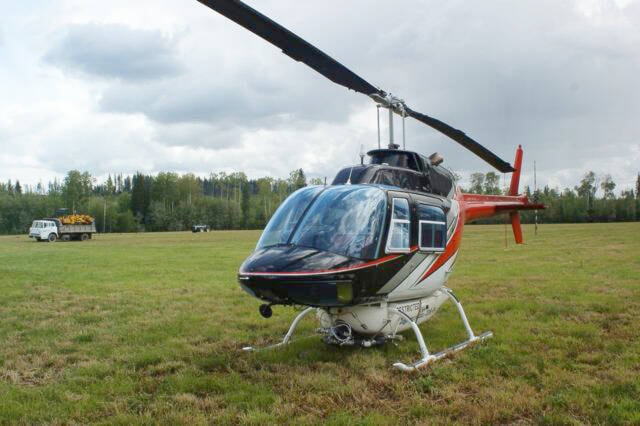For the man who has “lived and breathed forestry” his whole life, he didn’t think much about forest spraying until it came up to his family’s property line.
James Steidle’s family owned a cattle ranch north of Blackwater River between Quesnel and Prince George. His dad was a machinist, his sister studied forestry, and he, himself, was a tree planter. In 2010 when they were approached by a company that was going to spray up to the family’s property line, they fought back — unsuccessfully.
For Steidle, a talented woodworker, the founder of Stop The Spray B.C., and, at the time, an aspiring journalist (who now publishes articles), this began his delve into the world of herbicides and their detriment to the environment. He began asking question, after question, after question.
“Fundamentally, why are we getting rid of deciduous trees, birch and aspen, when we just had the pine beetle?,” asked Steidle.
In his research, “nobody had a good answer,” until one day, an industry worker fed up by Steidle’s pursuit suggested he talk to Suzanne Simard. She wrote the acclaimed book, Finding the Mother Tree: Discovering the Wisdom of the Forest.
Simard, who holds a Ph.D. in Forest Sciences and is a professor of forest ecology at the University of British Columbia, began telling Steidle all the great things about deciduous trees, which led him to even more questions.
“Why is no one else telling me this stuff? Why is this not more widely known to forestry?”
The conclusion Steidle came to is that people don’t want to talk about this stuff because of money.
According to the B.C. government in a presentation by Teresa Newsome at the Northern Interior Vegetation Management Association, “To insure (sic) optimal pine growth, remove aspen that have diameters equal to or greater than 0.75 times the pine diameter.”
A study by Phil Comeau out of the University of Alberta in 2010 also showed that “aspen removal can increase growth of lodgepole pine,” and by increasing aspen density, lodgepole pine declines.
Steidle noted that in his experience of tree planting for 23 years, pines are the quickest and easiest to grow. It would make sense, then, that logging companies, as they replenish forests, would want to plant more pine trees and reduce their competition (namely, aspen and birch). As such, companies resort to spraying and manual brushing.
However, pine trees are highly flammable, especially compared to deciduous trees. And with the pine beetle devastating so many of B.C.’s forests, and “more pine on the landscape than we’ve ever had before,” said Steidle, fuel is only being added to the fire.
Steidle referred to what he calls the “war on deciduous,” as there are many benefits to deciduous trees like the aspen, which even benefit spruce trees that grow well next to them, said Steidle.
“Aspen can stop forest fires, fertilize the soil, provide shade so seeds don’t get sun scalded. That’s not competition, they’re here to help.”
Steidle’s organization, Stop The Spray B.C., addresses many of these concerns and provides research on the team’s findings, including the effects on wildlife, the benefits of deciduous trees, aspen being used as a resource, the detrimental effects of herbicide environmentally and for the health of the population, and of course the question of why we spray.
Steidle noted the individuals within the forestry industry, including at West Fraser, whose progressive thinking is working to answer these questions and find solutions; however, much work is still to be done.
“Anyone in forestry who isn’t worried about job security or speaking out against it knows what I’m saying is true,” he said.
READ MORE: Group calls for forest diversity policies around Quesnel
READ MORE: Concerns about herbicide use in Interior forests: Columnist Jim Hilton
***
Don’t miss out on your local news. Direct access is only a couple of clicks away, to have the paper delivered, or get the daily updates…
